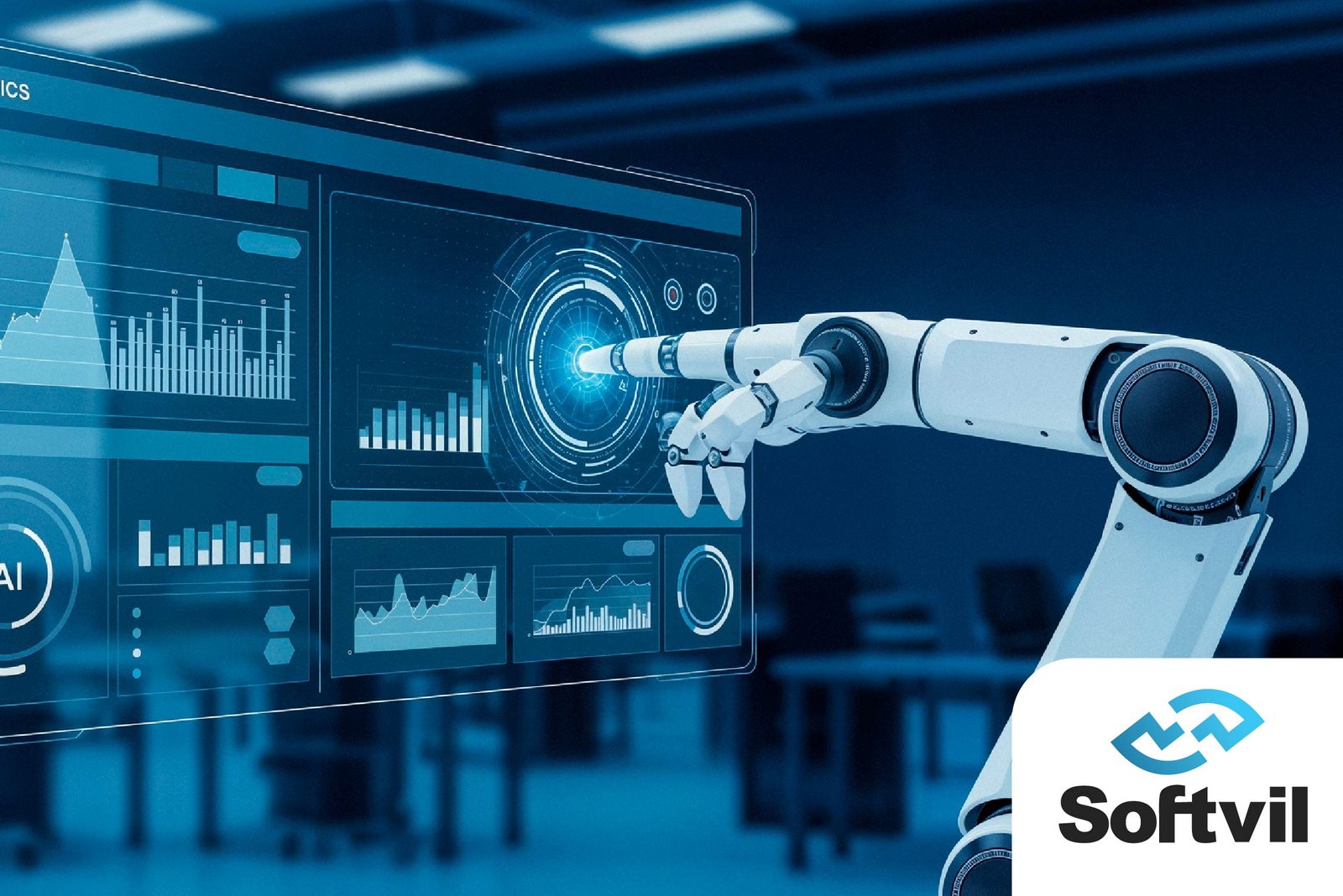In today’s digital economy, artificial intelligence (AI) has become one of the most transformative technologies shaping industries and redefining how organizations operate. However, while many businesses aspire to leverage AI for competitive advantage, few have built the necessary foundation to do so effectively. Becoming truly AI-ready is not about installing a few machine learning models or adopting automation tools—it requires a deep transformation across data infrastructure, governance, skills, and culture.
To create an AI-ready organization, companies must understand their level of AI readiness, invest in robust data and technology infrastructure, foster a data-driven culture, prepare their workforce for AI collaboration, and address the human and cultural aspects that often stand in the way of success. This article explores how organizations can strategically build that foundation for sustainable and scalable AI adoption.
Assessing AI Maturity and Digital Readiness

The first step toward becoming AI-ready is understanding where your organization currently stands on the AI readiness spectrum. AI maturity assessment involves evaluating an organization’s digital infrastructure, data management capabilities, leadership commitment, and cultural openness to innovation. Companies at an early stage of AI maturity often struggle with fragmented data systems, unclear governance, and limited understanding of AI’s potential impact on business outcomes.
A formal readiness assessment provides a roadmap for transformation. It typically includes the following dimensions:
- Strategic Alignment: Does the organization have a defined vision for how AI supports its broader business strategy? AI initiatives should not exist in isolation—they must connect directly to business goals, such as improving efficiency, enhancing customer experience, or unlocking new revenue streams.
- Data and Infrastructure Readiness: Reliable data pipelines, cloud platforms, and analytics capabilities are prerequisites for effective AI deployment. Without quality data, even the most sophisticated models will fail to deliver accurate or meaningful insights.
- Talent and Skills: Having a technically skilled workforce is crucial, but equally important is leadership understanding of AI’s potential and limitations. The entire organization must share a basic level of AI literacy.
- Governance and Ethics: AI introduces new risks, including bias, privacy violations, and model misinterpretation. A governance structure that ensures responsible AI development and deployment is a hallmark of maturity.
- Culture and Change Management: The most advanced technology will not succeed without a culture that embraces experimentation, collaboration, and data-driven decision-making.
By assessing these factors, organizations can identify gaps and prioritize initiatives that bring them closer to true AI readiness.
Infrastructure and Data Governance Essentials

A strong technological foundation is at the heart of every AI-ready organization. Without the right infrastructure and governance framework, even well-funded AI initiatives can falter. Two critical enablers—robust infrastructure and sound data governance—form the backbone of sustainable AI deployment.
- Infrastructure for AI Scalability
Modern AI systems rely on immense computational power, scalable storage, and high-speed data access. Traditional IT setups often lack the agility and performance needed for AI workloads. Cloud computing has become the preferred infrastructure model for AI adoption because it offers scalability, flexibility, and access to prebuilt AI services. Hybrid and multi-cloud strategies are increasingly common, allowing organizations to balance cost, compliance, and performance needs.
In addition to compute and storage, the infrastructure must include:
- Data lakes and warehouses for structured and unstructured data.
- MLOps (Machine Learning Operations) pipelines that automate the model lifecycle—from training and deployment to monitoring and updates.
- APIs and microservices for integrating AI models seamlessly into business applications.
This combination allows organizations to move from experimentation to production at speed and scale.
- Data Governance as the Cornerstone
AI thrives on data—its quality, accessibility, and integrity determine the success of AI initiatives. That’s why establishing strong data governance practices is essential. Governance ensures that data is accurate, consistent, and used ethically across departments.
Key elements of data governance include:
- Data Quality Management: Establishing data validation, cleansing, and lineage tracking processes to maintain trust in the information feeding AI systems.
- Access Control and Security: Ensuring sensitive data is accessible only to authorized personnel and compliant with privacy regulations such as GDPR or CCPA.
- Metadata and Cataloging: Creating an enterprise-wide understanding of available datasets to prevent duplication and promote reuse.
- Ethical Data Use: Defining guidelines for fairness, bias mitigation, and transparency in how data informs AI models.
Strong governance not only ensures compliance and accuracy but also strengthens the organization’s credibility and trust in AI-driven outcomes. Companies that lack governance frameworks often face AI adoption challenges such as inconsistent data sources, algorithmic bias, or unexplainable decision outputs.
Ultimately, infrastructure and governance form the foundation upon which the rest of the organization’s AI readiness is built.
Upskilling the Workforce for AI Collaboration

Technology alone cannot make a company AI-ready—the workforce must evolve alongside it. Workforce transformation is an essential component of any successful AI strategy. It involves equipping employees at all levels with the knowledge and skills needed to understand, trust, and collaborate with AI systems.
The shift toward AI collaboration changes the nature of many roles. Employees no longer just operate tools—they work alongside intelligent systems that augment decision-making, automate repetitive tasks, and generate insights. To maximize this potential, companies must invest in both technical and non-technical skill development.
- Building AI Literacy Across the Organization
AI literacy goes beyond coding or data science. It includes understanding what AI can and cannot do, interpreting AI-generated outputs responsibly, and integrating insights into everyday decisions. Business leaders should receive training in AI strategy, ethics, and governance, while non-technical employees should learn how AI impacts their workflows. - Developing Specialized Skills
While AI literacy is universal, some roles require deeper expertise. Data engineers, data scientists, and ML engineers form the technical core of AI development. Upskilling in programming languages like Python, knowledge of data pipelines, and experience with frameworks such as TensorFlow or PyTorch are highly valuable. - Promoting Human-AI Collaboration
The future of work is not man versus machine—it’s human plus machine. Employees should learn to interpret AI recommendations, question automated decisions when necessary, and apply human judgment where nuance or ethics come into play. This collaboration boosts productivity while ensuring responsible use of AI. - Embedding a Culture of Continuous Learning
Because AI technologies evolve rapidly, upskilling cannot be a one-time effort. Organizations should foster a culture of ongoing learning through online platforms, internal academies, or partnerships with universities. Embedding continuous learning ensures that workforce transformation keeps pace with technological advancement.
Investing in people ensures not only technical capability but also organizational adaptability. When employees understand and trust AI systems, adoption accelerates and the business reaps greater value.
Overcoming Organizational Resistance and Cultural Barriers

Even with the best infrastructure and skilled workforce, organizations often encounter resistance when trying to integrate AI. Cultural inertia remains one of the most persistent AI adoption challenges. Employees may fear job loss, distrust AI systems, or resist changing established workflows. Overcoming these barriers is essential to achieving full AI readiness.
- Addressing Fear and Uncertainty
Fear of automation replacing human jobs is widespread. Transparent communication about AI’s purpose helps reduce anxiety. Leaders should emphasize that AI is designed to augment human potential, not replace it. Sharing success stories where AI improved productivity or decision-making without eliminating roles builds confidence and trust. - Building a Data-Driven Culture
A truly data-driven culture is one where decisions are guided by evidence rather than intuition. This cultural shift requires leadership buy-in and consistent reinforcement. When executives model data-driven decision-making and celebrate fact-based insights, employees follow suit. Data democratization—making data accessible to employees through user-friendly dashboards and tools—also encourages adoption. - Encouraging Experimentation and Agility
Organizations that thrive in the AI era are those that encourage experimentation. Rather than fearing failure, teams should be empowered to test, learn, and iterate. A culture that rewards innovation rather than punishes mistakes helps AI initiatives grow organically and continuously improve. - Establishing Trust in AI Systems
Trust is foundational for AI adoption. Employees and customers alike must believe that AI decisions are fair, transparent, and explainable. Implementing explainable AI (XAI) techniques, maintaining audit trails, and communicating the rationale behind AI-driven outcomes help build that trust. - Leadership as a Change Catalyst
Leaders play a crucial role in overcoming resistance. They must articulate a clear vision of how AI aligns with the organization’s mission and values. Leadership sponsorship ensures resource allocation, removes roadblocks, and demonstrates that AI is a strategic priority, not a passing trend.
By confronting resistance directly and nurturing a culture that values collaboration, learning, and experimentation, organizations can transform fear into engagement and innovation.
The Road to an AI-Ready Future

Becoming an AI-ready organization is not a one-time project but a continuous journey of evolution. As technology advances, the goalposts for AI readiness will keep moving—what is advanced today may be foundational tomorrow. Success will depend on how quickly and responsibly organizations can adapt.
To summarize, building the foundation for AI readiness involves four key pillars:
- Assess AI maturity and readiness to identify strengths, gaps, and strategic priorities.
- Establish robust infrastructure and governance to ensure scalability, compliance, and trust.
- Invest in workforce transformation to create a culture of collaboration between humans and AI.
- Overcome cultural barriers by promoting transparency, agility, and a data-driven mindset.
Organizations that commit to these pillars will not only overcome AI adoption challenges but will also gain sustainable competitive advantage. As AI becomes a central part of digital operations, those that build strong foundations now will lead industries in efficiency, innovation, and customer satisfaction.
In the next decade, every successful business will, in essence, be an AI business. But the ones that thrive will be those that invested early in the people, processes, and technologies that enable true AI readiness. Creating an AI-ready organization is not just about keeping up with change—it’s about leading it, shaping it, and turning the promise of artificial intelligence into tangible, measurable business impact.
FAQs
AI readiness refers to an organization’s ability to effectively implement, scale, and benefit from artificial intelligence technologies. It includes having the right data infrastructure, skilled workforce, governance framework, and a strong data-driven culture.
Many organizations face AI adoption challenges such as poor data quality, lack of clear strategy, insufficient skills, and cultural resistance. Overcoming these requires leadership commitment, proper planning, and continuous upskilling of employees.
To create a data-driven culture, leadership must promote transparency, encourage data-based decision-making, and make data accessible across teams. This mindset shift ensures that insights, not intuition, guide business actions.
Workforce transformation involves upskilling employees to collaborate effectively with AI systems. It ensures workers understand AI tools, apply insights responsibly, and adapt to evolving roles shaped by automation and digital technologies.
Companies can address resistance by communicating openly about AI’s benefits, involving employees in pilot projects, and showcasing real examples of AI improving—not replacing—human work. Building trust and engagement is key to long-term AI readiness.
About Softvil
Softvil is a forward-thinking technology solutions company committed to driving innovation through AI readiness and digital transformation. By helping organizations build intelligent systems, strengthen their data-driven culture, and overcome AI adoption challenges, Softvil empowers businesses to achieve seamless workforce transformation and long-term success. With a focus on strategy, scalability, and sustainability, Softvil partners with enterprises to create AI-powered solutions that prepare them for the future of intelligent business.

